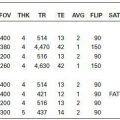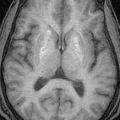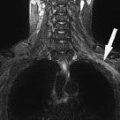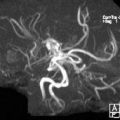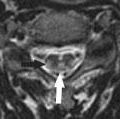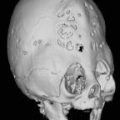MEDICATIONS FOR CONTRAST MEDIA REACTIONS
1. Diphenhydramine (Benadryl)
This antihistaminic produces relief of minor allergic reactions but induces drowsiness and anticholin-ergic effects (therefore, do not use in cases of glaucoma and prostatic hypertrophy). Parenteral (IV/IM) dose:
Child: 1.25 mg/kg
Adult: 25 to 50 mg
Oral dose:
Child: 1.25 mg/kg q4-6h
Adult:25to50mgq4-6h
2. Epinephrine
This alpha and beta receptor agonist induces vasoconstriction and increased peripheral vascular resistance, increases cardiac output, relaxes bronchi, inhibits histamine release, and relieves pulmonary edema. Do not use in cases of preexisting beta blockade.
Dose for mild to moderate reactions:
Concentration: 1:1,000
Route: SQ/IM
Volume:
Child: 0.1 to 0.3 mL/kg(<0.5 mL total)
Adult: 0.3 to 0.5 mL Repeat:
Child: q30min
Adult: ql5min
Dose for severe reactions:
Concentration: 1:10,000
Route: IV over 5 minutes
Volume:
Child: 1 to 3 mL
Adult: 3 to 5 mL
Repeat:
Child: q30min
Adult: ql5min
3. Aminophylline
Increases cAMP, leading to bronchial muscle relaxation, CNS stimulation, and cardiovascular effects.
May produce hypotension and seizures.
Dose for acute bronchospasm:
5 to 6 mg/kg IV slowly
4. Dexamethasone sodium phosphate
This corticosteroid is easier to use in an emergency and has the fastest effect Inhibits production of allergic mediators.
Dose for acute reaction: 20mgIVq2-6hPRN
5. Atropine
Produces anticholinergic effects, thereby inhibiting vagai tone, and is useful for bradycardia accompanied by hypotension.
Dose for acute reactions:
Child: 0.2 mg/kg IV (<0.6 mg total)
Adult: 0.5 to 1 mg IV q5-10min (<2 mg total)
6. Diazepam (Valium)
This GABA agonist inhibits neuronal firing and may be used to control seizures. It may be cardiotoxic and cause respiratory depression.
Dose in acute situation:
Child: 0.2 to 0.5 mg/kg IV q20-30min for a maximum of two doses
Adult: 5 to 10 mg IV q20-30min
7. Other medications, such as naloxone (Narcan), lidocaine, nitroprusside, phentolamine, ranitidine, and sodium bicarbonate, are used less often in cases of contrast media reaction and require more experience. Consult with the nurse and/or anesthesiologist for correct use.

 PREVENTION OF CONTRAST REACTIONS IN ALLERGIC PATIENTS
PREVENTION OF CONTRAST REACTIONS IN ALLERGIC PATIENTS
Prednisone, 50 mg PO q6h for three doses starting the day before (13,7, and 1 hour prior to procedure) the procedure, or
Methylprednisolone, 32 mg PO 6 to 24 hours before, and then repeat dose 2 hours before procedure. Diphenhydramine (Phenergan), 50 mg PO or IVI hour before procedure.
 MANAGEMENT OF CONTRAST REACTIONS
MANAGEMENT OF CONTRAST REACTIONS
FACIAL OR LARYNGEAL EDEMA
1. Give 02 6 to 10 L/min (via mask).
2. Give alpha agonist (arteriolar and venous constriction): epinephrine SC or IM ( 1:1,000) 0.1 to 0.3 ml, (= 0.1 to 0.3 mg) or, especially if hypotension evident, epinephrine (1:10,000) IV 1 to 3 ml, (= 0.1 to 0.3 mg) slowly. Repeat as needed up to a maximum of 1 mg.
If the patient is not responsive to therapy or if there is obvious acute laryngeal edema, seek appropriate assistance (e.g., cardiopulmonary arrest response team).
BRONCHOSPASM
1. Give oxygen 6 to 10 L/min (via mask). Monitor: electrocardiogram, oxygen saturation (pulse oximeter), and blood pressure.
2. Give beta-agonist inhalers (bronchiolar dilators, such as metaproterenol [Alupent], terbutaline [Brethaire], or albuterol [Proventil or Ventolin]) 2 to 3 puffs; repeat as necessary. If unresponsive to inhalers, use SC, IM, or IV epinephrine.
3. Give 1 dose of EpiPen/ epinephrine SC or IM (1:1,000) 0.1 to 0.3 mL (=0.1 to 0.3 mg) or, especially if hypotension evident epinephrine (1:10,000) IV1 to 3 mL (=0.1 to 0.3 mg) slowly. Repeat as needed up to a maximum of 1 mg.
Call for assistance (e.g., cardiopulmonary arrest response team) for severe bronchospasm or if oxygen saturation <88% persists.
HYPOTENSION WITH TACHYCARDIA (ANAPHYLAXIS)
1. Legs elevated 60 degrees or more (preferred) or Trendelenburg position.
Stay updated, free articles. Join our Telegram channel

Full access? Get Clinical Tree



